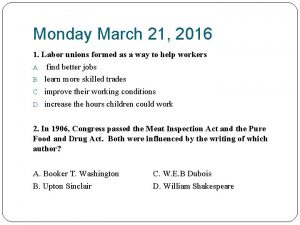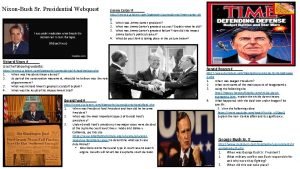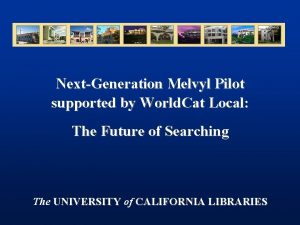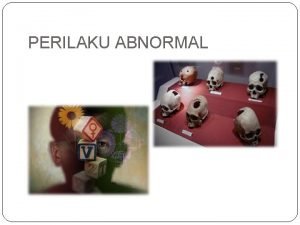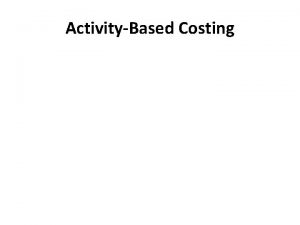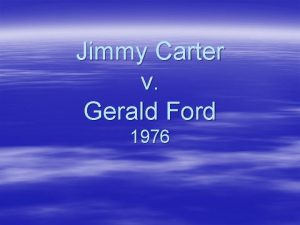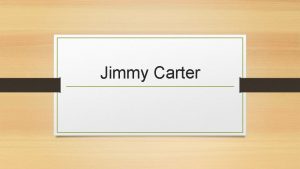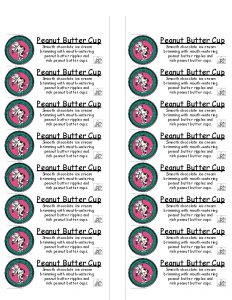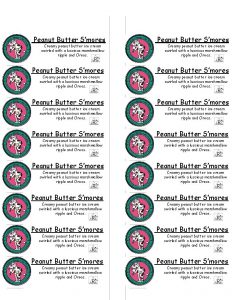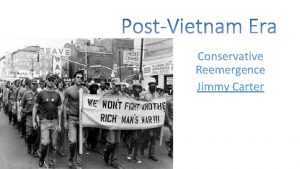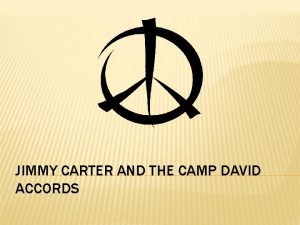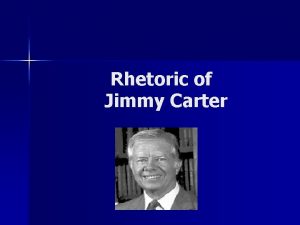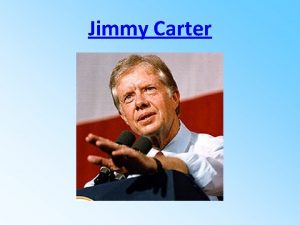The peanut farmer from Georgia Jimmy Carter l










- Slides: 10


The peanut farmer from Georgia Jimmy Carter l. From Georgia l. Served in Navy l. Elected governor of Georgia in 1970 l. First president to publicly claim to be “born again. ”

Challenges and troubles • Carter’s challenges and troubles • 1978 At Love Canal toxic chemicals from buried dump surfaced into homes. • 1978 Negotiated peace between Egypt under Anwar Sadat and Israel under Meacham Begin. Sadat assassinated in 1981. • 1979 Disaster at the Three Mile Island Nuclear Power Plant. • 1979 Iranian Revolution ousts Shah and takes Americans in Iran hostage.

A tired society l. Two decades of civil rights activism had brought great changes but had stalled by the 1970 s. Meanwhile, others were frustrated that things had gone too far. l. The edge of the counterculture had become little more than a “cool, ” “far out, ” or “groovy” marketing strategy. l. Institutions, from political parties to the presidency, had lost their legitimacy. Both Democrats and Republicans had major image problems. l. U. S. seemed to be incapable of stopping communism or resisting radicalism in the Middle East.

The Rustbelt and the Sunbelt • The economic region known as the Manufacturing Belt became known as the Rust Belt by the 1970's, as manufacturing and heavy industry declined due to high energy costs and foreign competition. • Cities in the Rust belt were subject to unemployment, underemployment in lowpaying service jobs, "white flight" to the suburbs, and general out-migration as manufacturing jobs moved

Economic Policies of President Carter • As a rhetorical device during 1976 presidential campaign, Governor Jimmy Carter combined the rate of inflation (6%) and unemployment (8%) into a "Misery Index" of 14. • At first, Carter modeled his economic recovery program after FDR's New Deal by advocating tax cuts, public works, and employment programs to stimulate the economy. • The Democratic Congress responded with legislation in accordance with the President's plan, but as unemployment decreased, inflation continued to rise.

Economic Policies of President Carter • • • In response, Carter tried an almost opposite approach. He attempted to curb inflation by slashing government spending, deregulating industries, and implementing wage and price controls. Many Democrats were alienated by what they perceived as a shift to the right in presidential policies. Despite the President's sincere efforts, the "Misery Index" soon rose to 21.

President Carter and the Continuing Energy Crisis • • • Although the oil embargo had ended and gas lines had ceased by Carter's presidency, the threat created by US energy dependence loomed on the horizon. Carter characterized the energy crisis as "the moral equivalent of war, " which critics derisively nicknamed "meow. " His calls for sacrifice and conservation were opposed by the influential oil and auto industries, and accordingly the subsequent National Energy Act of 1978 focused on increasing domestic production rather than conservation.

President Carter and the Continuing Energy Crisis • • Carter was successful in creating the Department of Energy as a cabinetlevel position, and he continued to try and set an example for citizens by conserving energy in the White House. President Carter had solar panels installed atop the White House in 1979 (which President Reagan later removed).

President Carter and the Continuing Energy Crisis • • Following the 1979 Islamic Revolution in Iran, Ayatollah Khomeini stopped all oil shipments, further exacerbating US energy woes. In July the president delivered a televised address that became known as the "Malaise Speech, " in which he entreats Americans to share the responsibility of energy conservation. The public and the press responded defensively and Carter's approval rating plummeted. Although the speech was a frank diagnosis of the country's ills, Carter was criticized for "blaming" the American people and offering few solutions.

